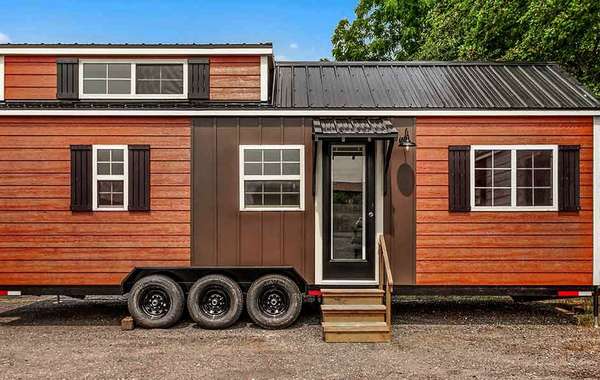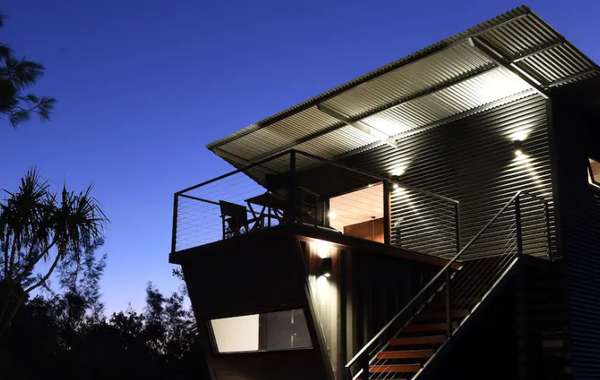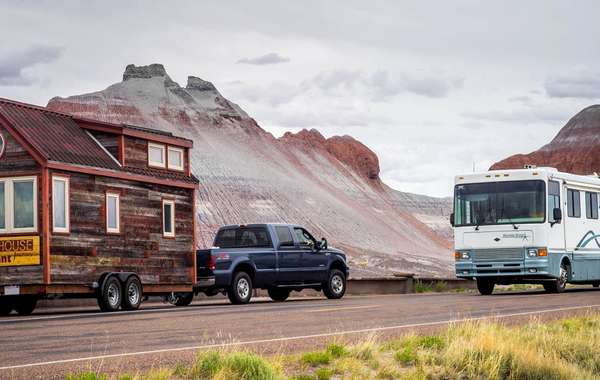WA paves the way for tiny home eco-villages:
Tiny houses, also colloquially referred to as tiny homes, are both an increasingly attractive and affordable housing option as well as a trending alternative lifestyle choice across North America and Canada as people realize that “quality of life” doesn’t depend on surrounding yourself with “stuff”.
Despite this, Tiny Houses have faced significant regulatory restrictions for siting them, resulting in them failing to gain popularity in Washington State. The recent passage of bill ESSB 5383, intended to enable the development of tiny house eco-villages and formalize siting requirements for Tiny Houses on wheels throughout the state marks a significant turning point for affordable housing in WA.
In growing cities without enough homes for all the people who need them, allowing more homes of all shapes and sizes like ADUs and laneway homes to be built holds down average rents and prices, and that helps everyone because in modern society a stable population tends to cause fewer social issues than an itinerant one. Also Increased funding for subsidies, which is possible when there's a legal recognition for certain classes of housing, delivers more homes to those who still can’t afford what the market currently provides. And tenant protections which rely on legal housing safeguard those with the least housing security - including renters, insulating them from rapid change. Tiny Houses & the tiny home movement have a place in this & Washington State is seizing a pioneering opportunity to pass a coordinated package of housing policies that calls on cities throughout the state to take action collectively to embrace Tiny Houses as part of the WA housing mix.
All about tiny homes
Here are some questions often asked about Tiny Houses:
What are they exactly?
- Recreational vehicles (RV's) ?
- Mobile homes or Trailers?
- Site- built small structures?
The truth is, the thing about many Tiny Homes is they don’t fit succinctly into any of these three definitions. Some fabulous Tiny Houses are on wheels, giving them the option of mobility, whereas other Tiny houses are on permanent foundations. The vast majority are the result of creative DIYers, and as such they defy any clear definition for legislators until now; or indeed compliance to any specific building codes, which for EcoHome gives exciting opportunities for innovation, yet at the same time is potentially troublesome. How qualified or educated in building science are most Tiny House builders, and how will this impact on tiny home's Eco-credentials, energy consumption, internal air quality (unless choosing formaldehyde free cabinets & plywood), comfort - you get the picture. The operative words here are "House" & "Home" - for "Tiny" Houses to be a "Green" option for a permanent residence, to EcoHome's mind some stance needs to be taken on their construction integrity and performance.
Depending on their characteristics, different regulatory structures are applicable. For example, recreational vehicles (RVs) can be certified with the Department of Labor and Industries (L&I). This certification process has historically been unsuitable to a custom - built RV or a Tiny House on wheels. (NB, there is now a new regulatory process available, making it easier for custom RVs/tiny houses on wheels to obtain certification with the L&I )
Meanwhile, site - built structures must comply with local building codes and Tiny Houses have historically been unable to meet the size and technical requirements for single - family dwellings in local WA building codes as they impose minimum internal sizes.
Basically, Tiny homes come in all shapes and sizes, from Tiny Houses built in shipping containers to space age egg shaped homes on wheels - there really is a Tiny House for everyone!
Where can tiny homes be sited and how long can they stay?
If it is on wheels, local jurisdictions will usually treat it as an RV so unless sited in a mobile home/RV park or some other limited planning exception, local zoning and development regulations also present challenges, such as minimum size and parking requirements. Further, occupancy limits and limits on numbers of accessory dwellings on residential lots limit the potential for community living also. What to consider before placing a tiny house in your yard.
For a deeper look into the regulatory challenges tiny houses face, because most to date in Washington County have been illegal residences, take a look at this MRSC Insight blog post about legalizing tiny houses.
The new Washington tiny house legislation:
The new Washington regulation ESSB 5383 supports the development and adoption of tiny homes in many ways:
- The new law specifically Defines tiny houses for the first time as follows:
“Tiny houses” and “Tiny houses with wheels” are to be considered in the state of WA as:
“A dwelling to be used as permanent housing with permanent provisions for living, sleeping, eating, cooking and sanitation built in accordance with the state building code.” For the first time, this differentiates tiny homes from recreational vehicles and other types of housing, allowing these structures their own category and the ability to be used as legal permanent residences in WA.
- It directs adoption of building code standards for building Tiny Houses:
In 2018, the International Code Council issued suggestions for Tiny house building standards in Appendix Q of the International Residential Code (IRC). Tiny home legislation ESSB 5383 directs the WA State Building Council to adopt standards specific to tiny houses by December 31. 2019. The legislature expects the newly- IRC guidance to become the basis for these standards, but local governments, in turn, can amend their building codes to include these new provisions.
Also, just last year the state legislature passed a bill authorizing local governments to adopt regulations eliminating any minimum gross floor area requirements for single- family dwelling (See HB 1085)
- Includes prefabricated tiny houses in the definition of factory- built prefab housing
The bill expands the definition of factory-built housing in RCW 43.22.450 to include tiny houses and tiny houses with wheels, incorporating prefabricated tiny houses into the L&I certification process for factory- built housing
- Creates a regulatory pathway for permitting tiny house Eco-communities.
In Washington State RCW 58.17.040 (5) currently allows the use of a binding site plan: “For the purpose of lease when no residential structure other than mobile homes or travel trailers are permitted to be placed upon the land.”
The new ESSB 5383 expands this section of the subdivision statute to include tiny houses and tiny houses with wheels, allowing the use of a local binding site plan process to create tiny house communities or Eco-villages. Furthermore, a new section is been added to Chapter 35.21 RCW that will allow a city or town to adopt an ordinance to regulate the creation of tiny house communities.
The bill also amends RCW 35.21.684 (3) to prohibit cities or towns from adopting ordinances that would prevent tiny houses with wheels from being used as a primary residence within manufactured/mobile home/trailer home communities. However, a local government may require that the tiny houses contain at least one internal toilet and shower or that the mobile home communities must provide equivalents or permanent sanitation and utility hook-ups.
- Extends protection under Manufactured/Mobile Home Landlord-Tenant Act (MHLTA)
The legislation specifically extends protections of Chapter 59.20 RCW to tenants of tiny house communities. The Northwest Justice Project offers a summary of a tenant’s rights and obligations under the MHLTA here.
- Waives competitive bidding requirements for construction of tiny houses by students
School districts, higher-education institutions, and other government entities that offer eligible training programs for students can contract with community organizations, non-profits, and others to build tiny houses for low-income affordable housing, especially in eco-villages & communities, without obliging competitive bidding requirements or tendering for the construction.

This makes us think of the famous Baggins End Domes at UC Davis named after Bilbo's home in The Hobbit, also known as The Domes or the Davis Domes community. This is now a student housing cooperative at the University of California Davis. Inspired by Buckminster Fuller and built by students in 1972 from foam insulated fiberglass shells in a group led by Ron Swenson, Environmental activist, Inventor & all around great guy, who was subsequently part of the original EcoHome Network and founder of Swenson Solar, Blacktail Solar Homes etc - EcoHome recently enjoyed a reunion of the original "Domies" at UC Davis at the Whole Earth Day celebrations, which we'll be writing more about later. Wouldn't it be great to see self governed tiny home communities like this all over university campuses in Washington State?
Next steps: tiny houses & local governments
Local governments interested in expanding opportunities for the adoption and promotion of tiny houses and tiny home communities can start the process for adopting local regulations to align with the new legislation. These actions could include:
- Forming Eco-village stakeholder advisory committees and encouraging community engagement in Tiny home planning applications.
- Reviewing zoning maps and comprehensive plans to determine where tiny house communities & villages could be located in WA.
- Identifying & removing existing barriers to tiny houses in code (e.g., minimum size requirements for permanent residences).
- Amending existing site plan regulations to include provision for tiny houses and tiny houses with wheels.
- Amending the local WA building code to incorporate new state standards for tiny houses (once adopted later this year).
- Drafting regulations for siting tiny house communities and connecting them to utilities & wastewater.
Now you know more about tiny house laws in Washington, find more pages about where its legal to park tiny houses and how to build tiny houses in the Ecohome Green Building Guide pages and here on these pages
Discover the benefits of a free Ecohome Network Membership here! |
Further reference reading on Tiny Houses & Tiny Home Eco-Villages in Washington State:
MRSC Insight Blog: Tiny Houses as a Workable Option to House the Homeless (2017)
The Spokesman-Review: Tiny house notion (2019)






































There is always a chasm between what we want and what we can have. However, this is a dynamic state influenced by knowledge and strategy. Developing safe, environmentally sound, friendly tiny home communities is possible IF there are enough like-minded people to support the strategy. I aim to find/build a community of tiny homeowners who respect the small footprint, and quality lifestyle, and enjoy sharing ideas with others. Rules of engagement need not supersede the enjoyment of nature and personal property as long as we are all on the same page.